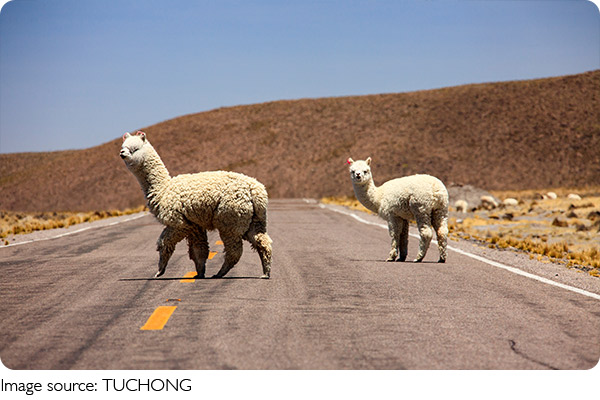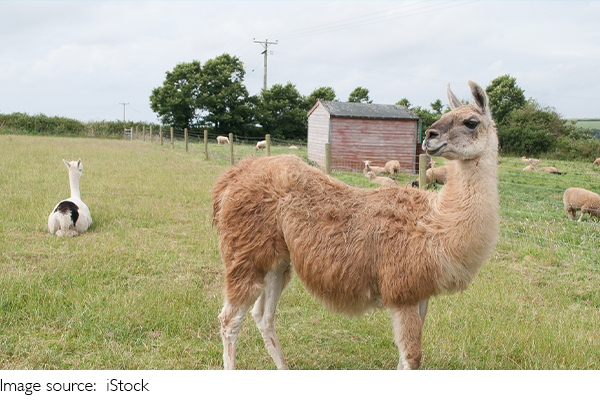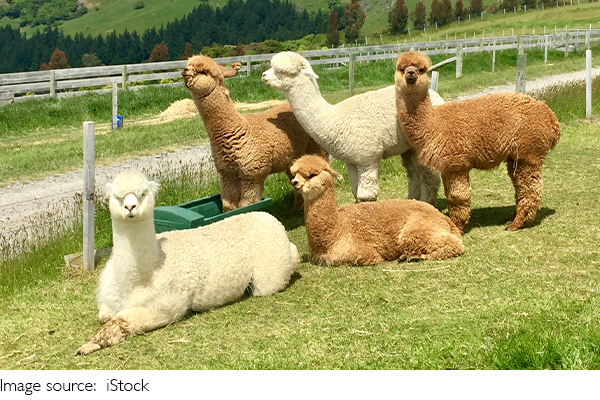The Alpaca: Global Sensation

The alpaca, a creature with a history as rich as its luxurious wool, has journeyed from the Andean highlands to becoming a global internet darling.
This article uncovers the fascinating story of the alpaca, from its ancient roots to its modern-day fame and the unique biology that makes it a beloved animal worldwide.
Guardians of the Andes for Millennia
The alpaca (Lama glama) has been domesticated for 6,000 years, dating back to the Inca civilization. In the harsh terrain of the Andes, between 3,000 and 5,000 meters above sea level, alpacas have been indispensable to indigenous people.
The Incas used alpaca wool for warm clothing and alpaca meat for sustenance, even considering them spiritual beings. Alpacas are depicted in the ancient trade routes in the murals of Machu Picchu, highlighting their significance.
Unlike other camelids, alpacas have evolved unique survival traits. Their padded feet allow them to walk gracefully on steep rocks, and their specialized nasal structures filter dust from the thin mountain air. Most intriguingly, alpacas have a social custom of spitting water at each other as a sign of friendliness, a behavior biologists call the "plateau social code."

During the Peruvian festival of "Cusco Inti Raymi," alpacas remain central figures. Farmers adorn the strongest alpacas with colorful capes and paint totems on their wool, leading them around sacred fires to pray for a prosperous year. This millennia-old ritual reflects the deep bond between alpacas and humans.
Rise from Highland Mystique to Global Stardom
Japanese anime "Kemono Friends" featured an adorable alpaca character, and Western influencers showcased alpaca wool fashion, propelling this once-obscure animal into global social media stardom.
On Instagram, the account @alpacainparis boasts over a million followers, with daily posts of the alpaca in designer outfits at iconic Parisian landmarks. At New York Fashion Week, alpaca wool haute couture dresses amazed audiences with their softness and luster. This "fiber gold" is three times warmer than wool and 40% lighter, making it a favorite in the eco-fashion industry.
A popular short video platform reports that the #Alpaca topic has over 5 billion views, with clips like "Alpaca Chasing Tourists" and "Alpaca Photobombing Weddings" frequently trending, showing the public's adoration for these charming animals.

The Alpaca's Unique Biological Code
The alpaca's endearing appearance stems from its distinctive features: large almond-shaped eyes with long eyelashes, and a round face that always seems to wear a half-smile. Biologists have discovered that alpacas have rare horizontal slit pupils, which grant them a 360-degree panoramic view, crucial for detecting predators in the open highlands.
Equally fascinating is the alpaca's "hairstyle." Different breeds have distinct fiber types: Suri alpacas have wavy, draping hair resembling hippie locks, while Huacaya alpacas have fluffy, curly wool that looks like an "explosion" of fur. Farmers raise them based on their fiber characteristics, with Suri wool used for high-end textiles and Huacaya wool ideal for warm blankets.
During the breeding season, male alpacas engage in a unique "courtship display." They circle around female alpacas, emitting low-frequency buzzing calls similar to bees and spitting frothy saliva to demonstrate strength. This seemingly comical behavior is actually an evolved survival strategy that avoids violent fights while efficiently passing on genes.
Sustainable Living on Alpaca Farms
On the shores of Lake Titicaca in Bolivia, the traditional "floating island" alpaca farming method is still practiced. The Uros people weave reeds into floating islands, where they grow grass and graze alpacas.
Alpaca dung fertilizes the reed beds, and shed wool is traded for necessities, creating a self-sufficient ecosystem. This "zero-waste farming" philosophy is recognized by UNESCO as "Intangible Cultural Heritage of Humanity."

Modern alpaca farms blend technology with tradition. Australian ranchers use AI to monitor alpaca health, analyzing dung to assess nutritional needs. Peruvian cooperatives have launched an "alpaca wool traceability system," allowing consumers to scan and learn about the wool's origin and farmer details, making fair trade accessible. In New Zealand, "alpaca therapy farms" have emerged, where urbanites can relieve stress by grooming and walking alpacas, a form of "animal-assisted therapy" for city dwellers.
The alpaca's journey from the Andean highlands to global fame is a testament to its adaptability and charm. From ancient traditions to modern sustainability, alpacas continue to captivate hearts and inspire innovative practices. Their story is a reminder of the enduring bond between humans and animals, and the importance of preserving cultural heritage and biodiversity.
-
 Pets Reduce LonelinessDiscover how pets can be a source of comfort, companionship, and emotional support to help reduce feelings of loneliness.
Pets Reduce LonelinessDiscover how pets can be a source of comfort, companionship, and emotional support to help reduce feelings of loneliness. -
 Desert's Silent JewelLost in the Sands: The Incredible Story of the Elusive Reem Gazelle!
Desert's Silent JewelLost in the Sands: The Incredible Story of the Elusive Reem Gazelle! -
 Wonderful World of DolphinsDon’t Be Fooled by Their Smile—What Dolphins Are Hiding Will Shock You!
Wonderful World of DolphinsDon’t Be Fooled by Their Smile—What Dolphins Are Hiding Will Shock You!